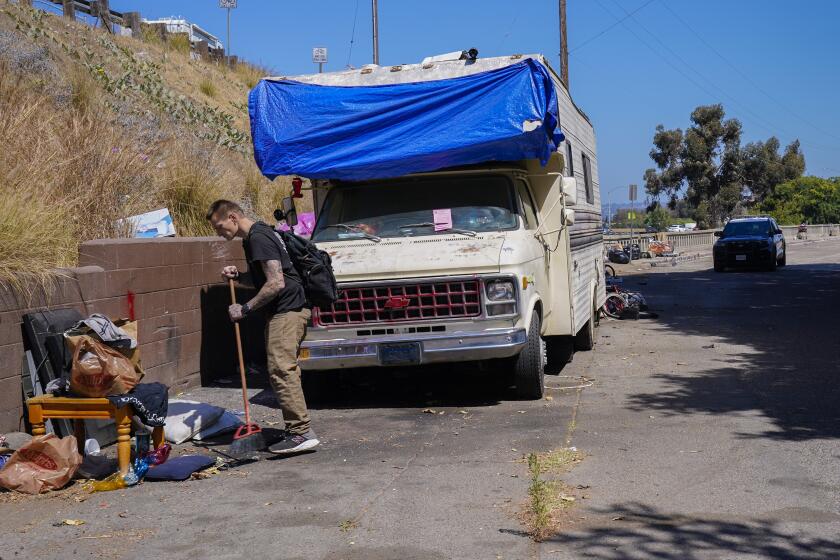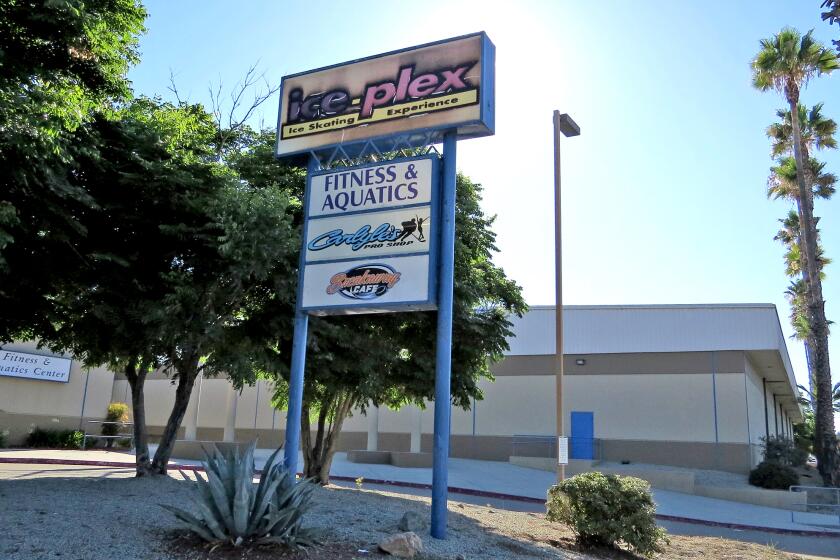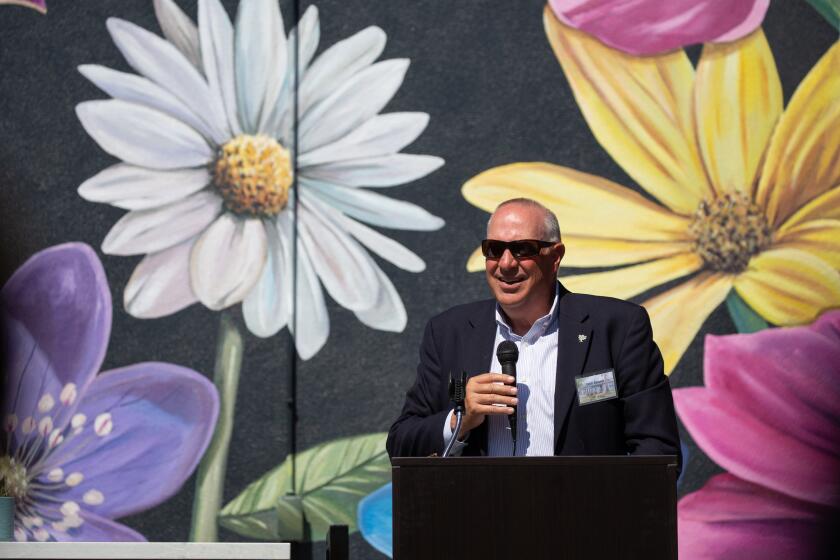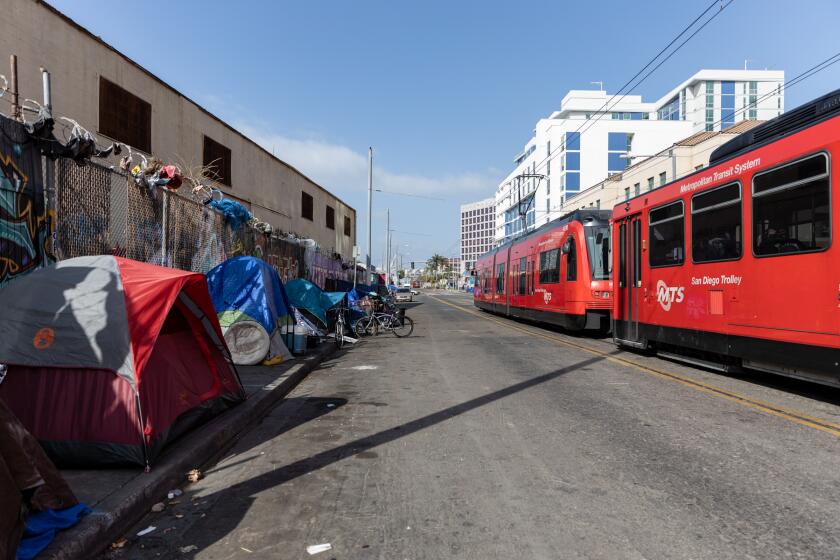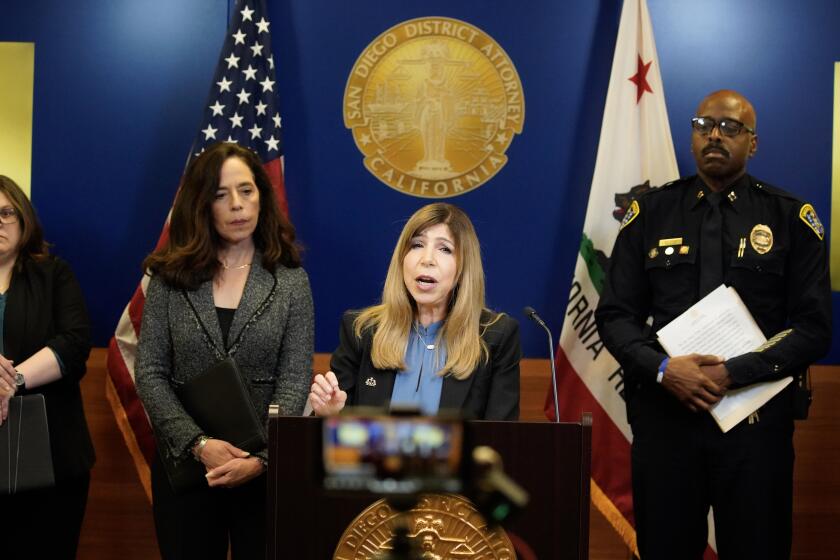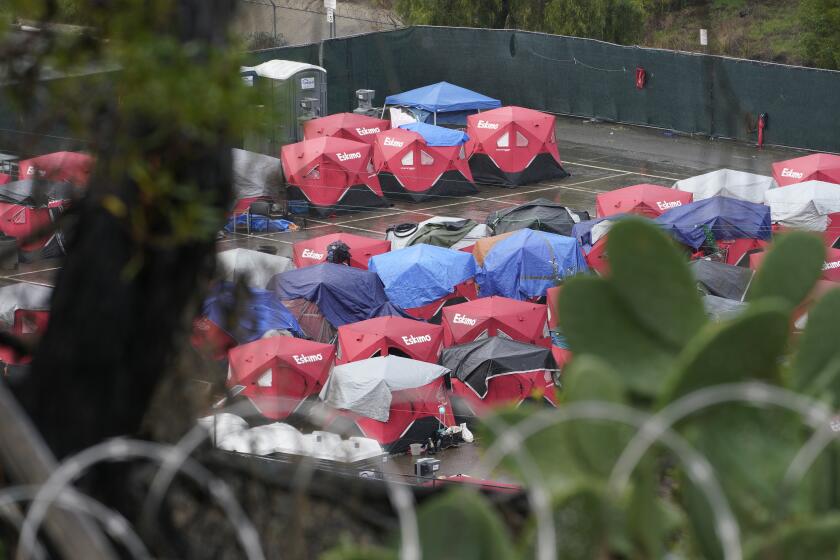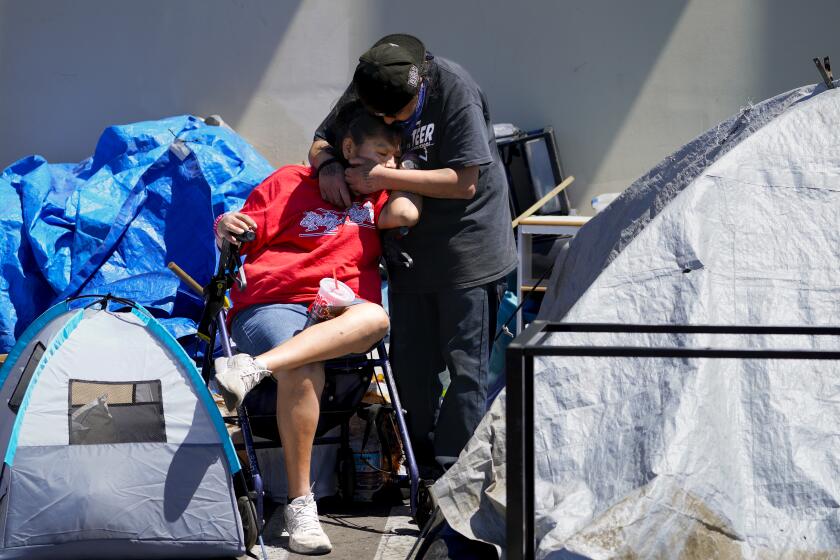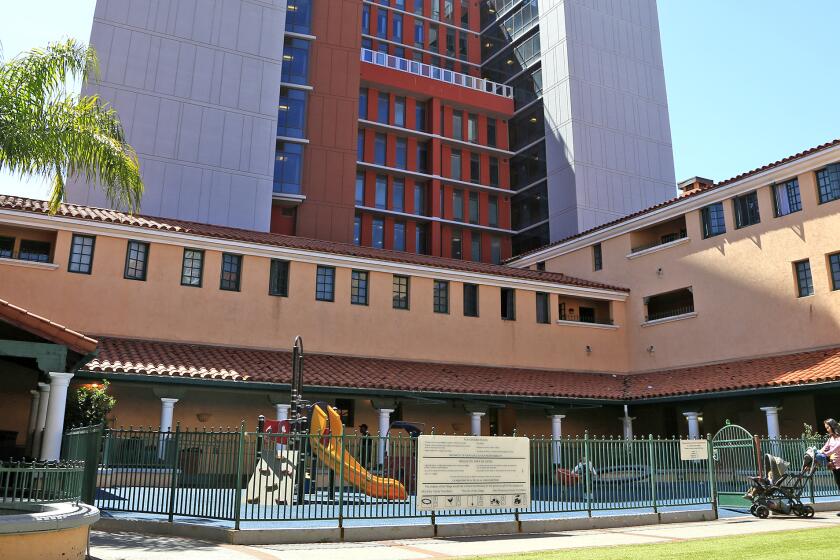Outreach team takes new, personal approach to helping San Diego’s homeless
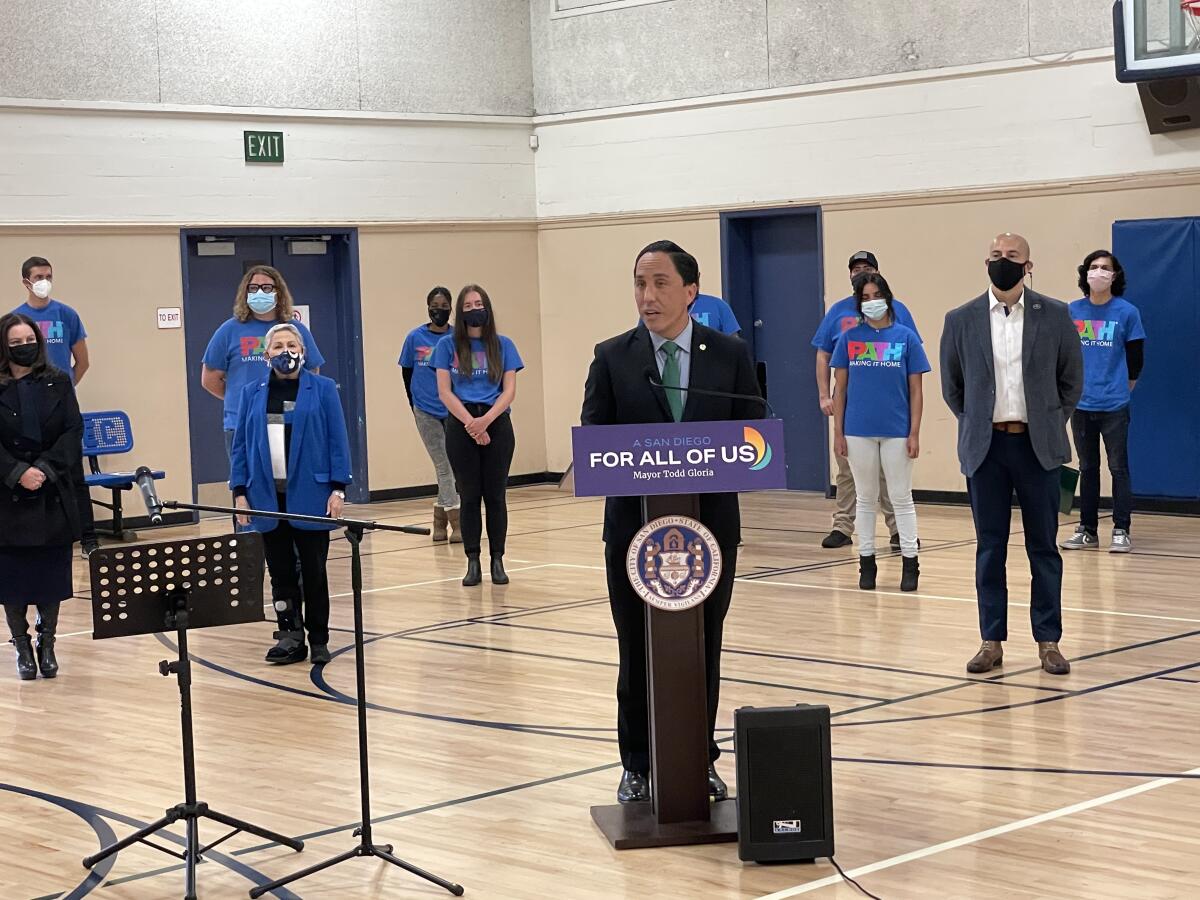
City-funded program is sending workers into neighborhoods to connect people with services, housing
In a shift away from traditional homeless outreach run by law enforcement, San Diego is deploying teams of social workers into specific neighborhoods to connect people on the street with health services, housing opportunities and other assistance.
“We call it a person-centered, neighborhood-based, trauma-informed, housing-focused approach,” San Diego Mayor Todd Gloria said during a press conference Wednesday at the Ocean Beach Recreation Center. “That sounds like a lot of jargon, but it is truly meaningful and represents the change in the way we’re doing this work.”
The city is not replacing the San Diego Police Department’s Homeless Outreach Teams, but is augmenting the effort with social workers who will work in Ocean Beach, Pacific Beach, Clairemont, downtown, North Park, City Heights, Balboa Park and possibly other areas.
“For the most part, we have asked our police officers to serve as social workers,” Gloria said. “Our police department’s Homeless Outreach Team is doing work that changes lives.”
HOT officers have been able to help many people, but Gloria said the city must do more.
“This is not a simple problem to solve,” he said. “In fact, it’s the most complex one that I know of. It calls for all of us to have to work together in new and different ways because what we’ve been dong isn’t getting the results that San Diegans want.”
The San Diego City Council awarded $1.5 million to People Assisting the Homeless to put the teams together last year, and PATH has hired 17 outreach specialists to build the program.
Joining Gloria on Wednesday in Ocean Beach, where one of the new teams was launched in December, were several members of the PATH teams, City Councilwoman Jennifer Campbell and heads of the Regional Task Force on the Homeless and San Diego Housing Commission, which is coordinating the outreach effort.
The new program follows a nationwide discussion about shifting away from law enforcement-based outreach because homeless people often are reluctant to accept help from officers.
Jonathan Castillo, chief regional officer at PATH, said the approach also differs from outreach teams that try to connect homeless people with just the service provider they work for. Castillo said the new teams will work to connect people with whatever program works best for them.
Under the new approach, a two-member mobile homeless resource team works in a specific neighborhood where they will get to know homeless people over a period of time. Those teams are backed up by a rapid response team that will come out to any neighborhood if someone is in a crisis situation and help connect the person with services immediately.
PATH was awarded the program after launching a similar mid-city outreach model in 2018 that was funded by North Park Main Street in collaboration with Price Charities, City Heights Business Association, City Heights Community Development Corporation, former San Diego City Council members Chris Ward and Georgette Gomez and former San Diego County Supervisor Ron Roberts.
Pete Haggard, an outreach specialist with PATH, has worked on the mid-city team for about a year and said he helped find permanent housing for 14 people just in the last quarter. Over the past year, the team also has made contact with 421 people in North Park and 492 people in City Heights, found temporary shelter for 84 people from both communities and permanent homes for 21.
Haggard said he meets two or three times a week with people he is fully engaged with. His work has included helping a woman get her driver’s license for her job and working with a landlord to get someone an apartment.
Some people are harder than others to help, he said, recalling one woman who put him off for months.
“When I first met her in North Park, she was 100 percent service resistant,” he said. “I’m talking scream in our face service resistant.”
Haggard said he would bring her food whenever he saw her, but after five months she still would not accept his help. Then one day he heard that she was fond of grilled cheese sandwiches, so he picked one up at a Starbucks.
“After that, she saw that I actually cared about her, and the walls broke down,” he said. “With her, it almost took five months of being in the area, and now she’s at a woman’s rehab and doing really good.”
Get Essential San Diego, weekday mornings
Get top headlines from the Union-Tribune in your inbox weekday mornings, including top news, local, sports, business, entertainment and opinion.
You may occasionally receive promotional content from the San Diego Union-Tribune.

